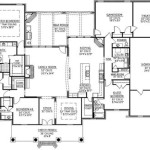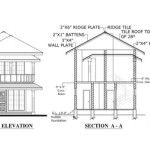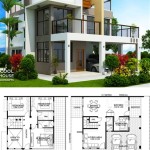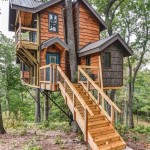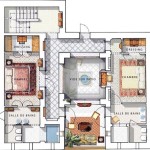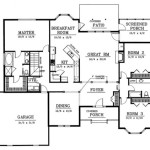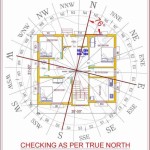Essential Aspects of Mini House Plan
Mini houses, also known as tiny homes or micro houses, have gained immense popularity in recent years due to their compact size, affordability, and environmental friendliness. While planning a mini house may seem simple, several essential aspects must be considered to ensure functionality, comfort, and sustainability.
Land Considerations
The size and location of the land are crucial factors. Mini houses can be placed on small plots, but it's important to ensure adequate space for outdoor living, parking, and potential expansion in the future. Zoning regulations and building codes must also be carefully checked to ensure compliance with local ordinances.
Layout and Design
The layout of a mini house should maximize space utilization while maintaining comfort and functionality. Open floor plans with multifunctional spaces are common, allowing for flexibility in furniture placement and maximizing natural light. Vertical storage solutions, such as built-in shelves and loft spaces, can optimize storage without compromising living space.
Kitchen and Bathroom Design
Kitchens and bathrooms in mini houses require thoughtful planning due to limited space. Consider space-saving appliances, compact fixtures, and innovative storage solutions. For instance, cabinets can be hidden under stairs or integrated into walls to maximize storage capacity.
Energy Efficiency
Mini houses offer great potential for energy efficiency. Incorporating energy-efficient appliances, windows, and insulation can significantly reduce energy consumption. Consider incorporating renewable energy sources, such as solar panels or wind turbines, to enhance sustainability and reduce utility costs.
Water Management
Water conservation is essential in mini houses. Low-flow fixtures and water-saving appliances can help minimize water usage. Rainwater harvesting systems can collect and store rainwater for non-potable uses, such as watering plants or flushing toilets.
Building Materials
The choice of building materials impacts the durability, sustainability, and cost of a mini house. Sustainable materials, such as recycled wood, bamboo, or straw bales, offer eco-friendly alternatives to traditional materials. Consider using energy-efficient materials, such as insulated concrete forms (ICFs), to enhance insulation and reduce energy consumption.
Exterior Design
The exterior design should reflect the overall style and functionality of the mini house. Consider using sustainable materials, such as composite decking or recycled siding, for durability and weather resistance. Incorporate features like awnings, porches, or balconies to enhance outdoor living and expand the usable space.
Conclusion
Planning a mini house requires careful consideration of land, layout, design, energy efficiency, water management, building materials, and exterior design. By incorporating these essential aspects, homeowners can create a compact, functional, sustainable, and aesthetically pleasing living space that meets their needs and aspirations.

440 Mini House Plan Ideas Small Plans Floor

Tiny House Design Floor Plans

Tiny House Plan Examples

27 Adorable Free Tiny House Floor Plans Craft Mart

Beautiful Tiny House Plan Ideas For Your Inspiration Engineering Discoveries One Bedroom Plans Small Layout

The Athrú Tiny House Humble Homes

Tiny House Floor Plans Design Your

Tiny House Plans For Houseplans Blog Com

Tiny House Plans 4x9 Meters 2 Bedroom Terrace Roof Samhouseplans

12x16 Tiny House 364 Sq Ft Floor Plan Model 3a


